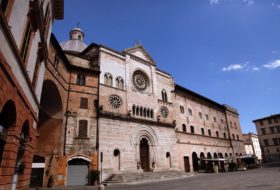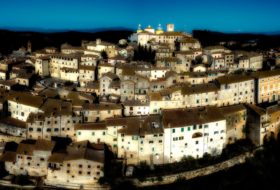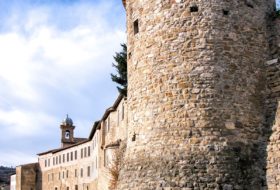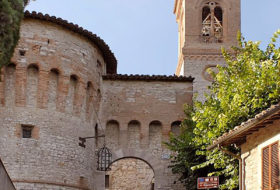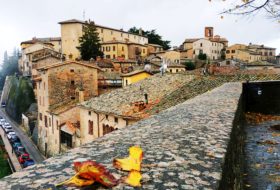Volver a la exploración
Guided Tour of Perugia
Discover Perugia and its Etruscan and Umbrian origins. Immerse yourself in its history, architecture and art
If you are planning a trip to the city of Perugia and if you want to discover its most characteristic nooks and crannies as well as its rich heritage of historic monuments and impressive artworks, don’t miss our guided tour in the fascinating Umbrian capital.
Thanks to the expert knowledge of our guides, you’ll soon find yourself caught up in the exciting history and vicissitudes of the city’s ancient past, discovering all sorts of interesting anecdotes and curious insights.
Your tour will begin at Rocca Paolina, a huge fortress built by Pope Paul III Farnese, between 1540 and 1543, after having won the salt war against the forces of Perugia. Numerous houses were destroyed in order to build the fortress, including those of the Baglioni family, and others were incorporated into the building. You will be able to admire the parts of the fortress that have survived the successive attempts at its destruction by the inhabitants of the city, including the wonderful underground passages. A walk through the fortress is guaranteed to make you feel overwhelmed by the atmosphere of a bygone time. Don’t forget to observe the elegant arch, the capitals and the columns of Porta Marzia, the ancient Etruscan gateway dating back to the 3rd century BC which survived the attacks of Perugia.
Walking through the historic centre, you will reach Corso Vannucci, Perugia’s main street, which is dedicated to the illustrious painter Pietro Vannucci, better known as Perugino. Several imposing palazzi are situated here including Palazzo dei Priori with its gothic-style facade, which today is part of the town hall. Inside the Palazzo you’ll be moved by the beauty of the Sala dei Notari, named after the ‘Arte dei Notai’. The hall, where the municipal public assemblies were originally held, has large arches and lovely frescoes. Palazzo dei Priori also houses the Nobile Collegio della Mercanzia, the ancient seat of the merchant guild and the Nobile Collegio del Cambio, the former headquarters of the guild of money-changers and bankers. The latter preserves a wonderful cycle of frescoes that are among the most important in the Renaissance period, created by Perugino. The itinerary will continue with a visit to the majestic Cattedrale di San Lorenzo, dedicated to the deacon who was martyred in Rome in 258. The church has a 14th-century portal in Baroque style designed by Pietro Carattoli on the main facade, which is less elegant and majestic however than the 16th-century lateral facade overlooking Piazza IV Novembre, a work by Galeazzo Alessi.
Opposite the lateral facade of the Cathedral, you’ll see Fontana Maggiore, with its 50 bas-reliefs and 24 decorative statues. Created by the Pisano brothers as a celebration of the new aqueduct, it is considered one of the most important sculptures of the medieval period.
Continuing your tour of Perugia, you’ll find yourself in front of the monumental Arco Etrusco or Arco di Augustus, an 11-metre high gate dating back to the 3rd century BC. This was considered the city’s most important gate due to its size and its grandeur; it has reached us today in excellent condition, and because it has remained so intact throughout the centuries, it is now considered the most important gate of ancient Etruria. You can then continue your tour, feeling privileged and excited to be able to walk through the medieval alleys and admire numerous charming, characteristic panoramic views. Finally we will visit the Pozzo Etrusco (well), located in the underground recesses of Palazzo Sorbello and dating back to the 3rd-2nd century BC. The well, designed to function as a cistern, was built using travertine blocks and could hold more than 400 cubic metres of water.
If you choose the full-day tour of Perugia
After lunch you can complete your tour by walking through the narrow streets of Rione di Porta Santa Susanna (neighbourhood), one of the oldest and most characteristic parts of Perugia with its Arco dei Priori and its Church of San Francesco al Prato, or you can visit the Rione di Porta Sant’Angelo, named after its Church of San Michele Arcangelo, and its neighbourhood which extends as far as the woods. Alternatively, you can admire the Rione di Porta San Pietro and its beautiful Benedictine and Dominican settlements or visit the wonderful Galleria Nazionale dell’Umbria. The latter is located in the upper floors of Palazzo dei Priori di Perugia and in it are displayed, chronologically, numerous works of art from the Middle Ages and the Renaissance by artists of the calibre of Arnolfo di Cambio, Nicola and Giovanni Pisano, Beato Angelico, Piero della Francesca, Perugino, Pinturicchio and others.





